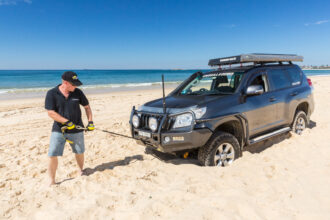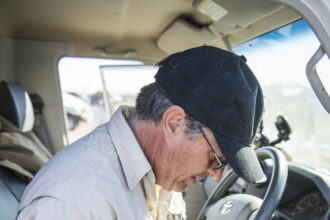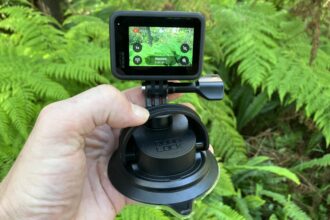With warmer months just around the corner it’s only natural to want to load up your four wheel drive and hit the beach. We all know that lowering tyre pressures will get you further in the soft stuff, yet how much thought have you put into the equipment required to pump your tyres back up to road pressures?
If you don’t have an air compressor, it must be said a quality unit is something you (as a four wheel driver) will use time and time again, and in reality should be one of the first purchases you make for your vehicle (after a quality recovery kit). For this reason alone, we thought it was about time to test the top-selling portable air compressors available on the market, and determine which is the most suitable compressor for your needs.
FOR THE FULL STORY, CLICK HERE
THE TESTING METHOD
All compressors were required to inflate five 31-inch tyres (an extremely common size) with each tyre timed for inflation to 30psi, rather than try and break each compressor with a torture test. After all, this is how you would be using these compressors at home! Special interest was paid at the final tyre, which should have taken the longest due to the compressor getting hot. Speaking of heat, we used an infrared thermometer (heat gun with a laser, basically) to measure how much heat each compressor produced during the test… LOTS as it turns out! It was also interesting to check which part of the compressor was the hottest, and in many cases it was the cylinder head.
To ensure accuracy, we had a second hole drilled in each test rim, with a second tyre valve installed. We used the Tyre Dog tyre pressure monitoring system to keep tabs on tyre pressures, as this allowed for accurate pressure readings without having to stop the compressors or take a separate reading (which could have allowed air to escape and in turn provided varying results). This was, in our opinion, the fairest and most accurate method of testing each compressor.
Once we had assessed the data from each compressor, we picked the three top-performing air compressors, and put them in a three-way shootout. The test for this was based around inflating a 37-inch tyre (well, 36.4-inch to be accurate) on the Iveco Daily 4X4 we had in the Unsealed 4X4 garage. This vehicle was also used to power each compressor with the engine running naturally. We allowed these three top-performing compressors five minutes alone with this huge tyre, to see just how much air pressure they could produce in the set time. The results were extremely interesting, to say the least.
LOOKALIKES… WHAT’S THE GO?
One thing we noted was how similar many compressors looked in appearance. The offerings from Ironman 4X4, Ridge Ryder, Repco, Tigerz11, Mean Mother Adventurer II and DR Air all on first glance seemed to be twins. We were extremely interested in the results of these units, to see if they actually performed similarly or just had an identity crisis. This is especially relevant considering there is a fair bit of money separating the cheapest from the most expensive of this design ($140-$319). It is a bit sad to see, truth be told, that there is a real lack originality in this sector design-wise. However, our test results did highlight that there in fact varying results when it came to the overall performance of each compressor. The plot thickens!
NOTABLE EXCLUSIONS
There were a few major players who opted out of this compressor comparison.
A big surprise was Terrain Tamer who declined, however their reasoning was valid. They are
re-engineering a new compressor, which is due for release next year, and have decided to stop pushing their old model until the new unit is ready. Stay tuned however, as we will be putting that compressor through its paces once released.
Two other companies you might have thought would be included, TMAX and Projecta, are no longer bringing compressors into the country. The units you see for sale on on-line auctions websites are either grey imports or old stock. So in fairness to these companies, we will have to wait until they are selling compressors again.
We also decided against including engine-driven compressors such as Endless Air, as these will only fit a certain number of vehicles (making them more of a specialised product). But if you would like to see them tested, drop us a line and let us know!
THE RESULTS
If we base the results off the compressor with the fastest time at the fifth tyre, the clear winner in terms of outright speed is the ARB Twin Compressor; followed by the Mean Mother Adventurer II; and in third place the Ridge Ryder Ultimate. These three compressors progress to the next round, which we have dubbed ‘five minutes alone with a 37-inch tyre’.
TOP THREE SHOOTOUT
FIVE MINUTES ALONE WITH A 37-INCH TYRE
RIDGE RYDER ULTIMATE
42.5psi after five minutes with a temperature of 101°C
ARB TWIN COMPRESSOR
56psi after five minutes with a temperature of 107°C
MEAN MOTHER ADVENTURER II
49.5psi after five minutes with a temperature of
97°C
CONCLUSION
Well, I guess it’s not terribly hard to believe the most expensive portable compressor tested, which featured a twin-head design and a largish external air tank, would be the best performer. Another point worth mentioning with the ARB unit, is thanks to the inbuilt air tank, it can in fact run a variety of air tools such as rattle guns. But at nearly $900, it would want to be the best! If money is no hesitation though, I would have no issue recommending the ARB Twin Compressor as being the best performing portable air compressor on the market.
If you find it hard to justify spending that much on an air compressor, it would be hard to go past the Mean Mother Adventurer II, followed by the Ridge Ryder Ultimate from Supercheap Auto, which are both priced at $299, nearly one-third the price of the ARB unit. These were the standout performers during testing, and we will be following up on this with further long-term testing of each of these units to see how they perform in the field, over time.
Words By Evan Spence, Photography By Brett Shearer










Hi Folks, did you publish the full list anywhere? It would be interesting to see if the “losers” were in any way close and may provide good economic alternatives for less frequent use.
What part of “Read the full story” click here did you miss?
Honest to God some ppl are quick to be cynical with closed eyes.
Next time try reading the full article before commenting, I found it easily because it was high-lighted in RED LETTERS
he didn’t sound cynical to me (innocent mistake i’m guessing)…. but you sure sounded like an arse!!!!